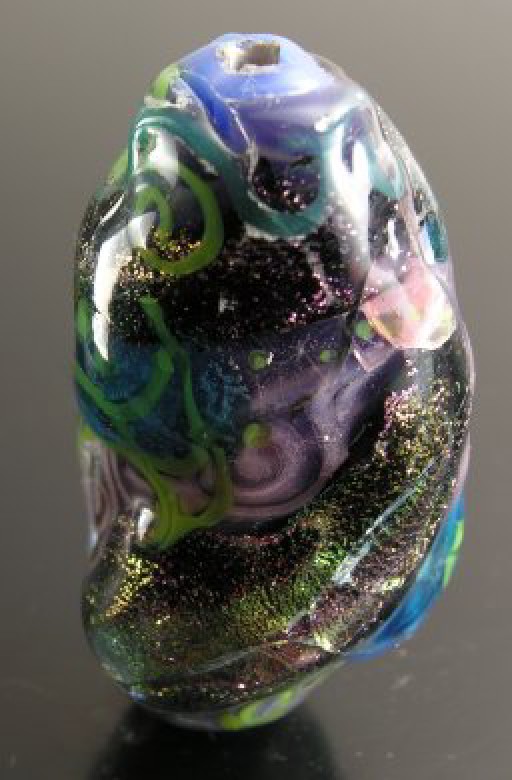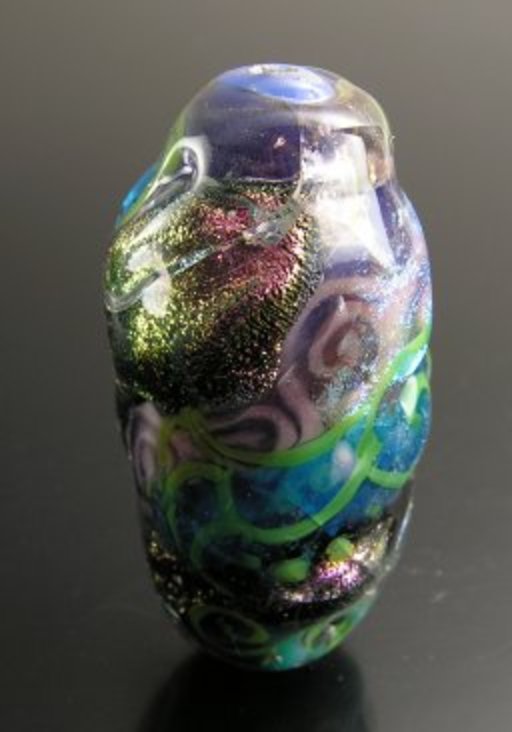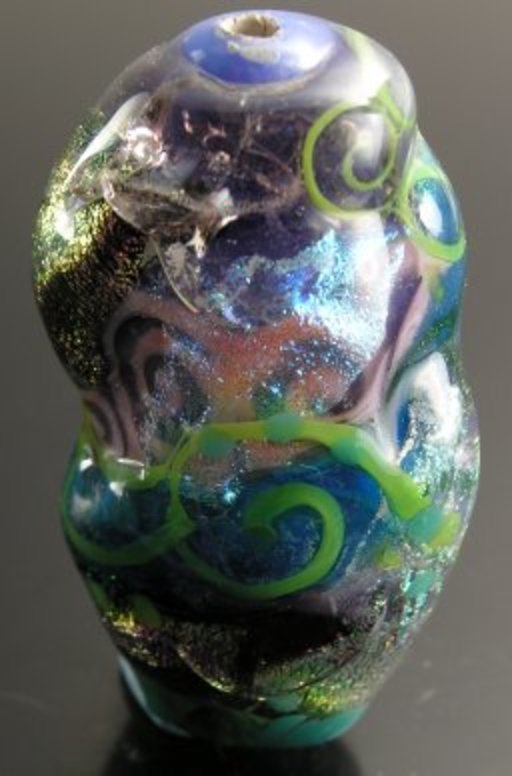Okay, so the first two beads I showed were pretty darned awful, but I was learning something. Let's back up and explain what the goal was, first. I've already mentioned I wanted to make an attractive and distinctive dichro focal. However, I haven't really discussed much how I specifically wanted to achieve that. The hazy idea in my head went something like this:
- I usually pile on layers of dichro, for depth;
- let's see if I can incorporate other things besides dichro
- what about curliQ trailing?
- also, how can I incorporate opaque colors but still have translucency?
So the question is, how well am I carrying out these individual directives? In the first bead I was too timid, laying two sets of curliQs directly on top of each other, without any transparent casing in between to soften them; also I stopped dead at the edge of the dichro, afraid to cover it up. Yech.
In the second bead, I went too far the other way, and covered up the undertrailing and dichro so effectively you can barely see it. This bead is far from perfect, but the layering is starting to work a tad better:
Part of my problem, of course, is that I think it's very difficult to mix flat, saturated opaques into the sparkly, translucent theme—dichroic glass, by its very nature reflects and refracts light, and so do multiple layers of transparents. Opaques, on the other hand, stop it dead. Usually I get around this problem by simplifying it vastly, that is, putting opaque stringers on a plain hollow bead, either transparent or opaque (or translucent, e.g. greasy) or by using dark transparent stringers, often on a light transparent base. The dotties series exemplifies this.
However, I have these tubes of opaque BE stringers that I bought to make a particular series of beads that never really took off, so I was looking to (cue the Darth Vader theme) use them up. Besides, wouldn't it be really cool if I could get it to work?
Sigh.

A third view, by far the weakest. Note the nasty, broken-release hole. I typically keep piling glass on my dichro focals till this happens: it's my cue to stop. Otherwise I suppose I'd be like that lampworker that made a grapefruit sized bead. On his minor.
Ok, so some of the opaque stringers—particularly the lavender purple that I actually think is pink—work reasonably well when cased by a dark transparent, but still, there are some major problems. One is the fact that somewhere about halfway down the bead collapsed and ‘touched’ the mandrel, which is why it has this weird saggy shape. Once there is a touch in a large hollow bead, it will continue to collapse even if there are no leaks. By working cold, you can slow this, but the option to really lay on the heat to reshape is now closed.
There's also a lot of devit, and as so often happens when I make these beads, one end of bead release (remember with a hollow bead there are really only two points of attachment, at the ends) gave out.
And what's with the cracking? Did I fail to warm the bead adequately before sticking it in the kiln? (Big beads especially should be overall-warmed before being placed in the kiln.)
The mystery continues next time around...
Unless otherwise noted, text, image and objects depicted therein copyright 1996--present sylvus tarn.
Sylvus Tarn
